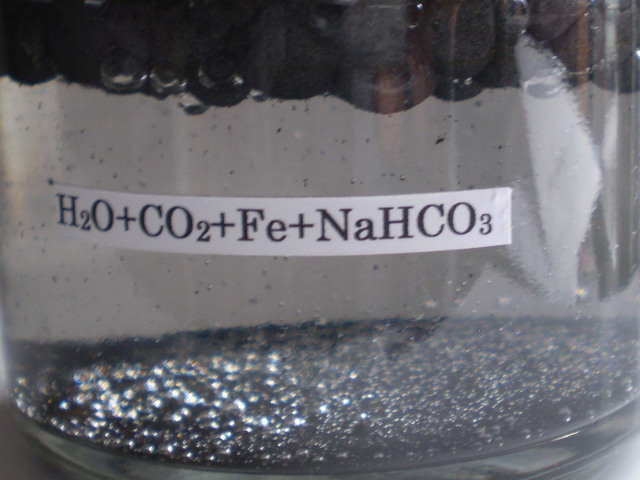to Former page to Next page

.jpg)
(a) addition of NaHCO3 (2g) (b)addition of NaHCO3 (7g)
Fig,26 Effects of salt carbonate of soda (NaHCO3) to the iron carbide bubble Here, carbonated water is 90 cc, iron powder is 5g. Photographing is after 15 hours from the mixing
4.2.c Effects of caustic soda (NaOH) to the iron carbide bubble
In order to check the influence of alkalinity, caustic soda (2 g of NaOH) is added to the carbonated water (90cc) with iron powder (5g). When NaOH is added to the water, it will be alkalinity water. The iron carbide bubble in immediately after the mixing is shown on the left side of Fig. 27. The bubble has disappeared right away as soon as it was born, because the membrane of bubble will react with the hydroxyl group. The situation of the water after 20 hours is shown on the right side of Fig. 27. The color of iron powder in the bottom becomes brown, and the bubble stops occurring. The hydroxyl group of OH- functions as oxidizing agent.
Fig.27 Effects of caustic soda (NaOH: 2g) to the carbonated water (90g with iron powder (5g). The situation after 20 hours shown on the right side is compared with that of the beginning shown on the left side .
Summary
The necessary condition to keep bubbles in the water is neutral acidity. Although proton in the water is able to repair the bubble that was about to break, existence of hydroxyl group of OH consumes the proton. It is conceivable that the existence of calcium ion has the effects to strength of membrane, because the bubbles with double layered complex structure were formed under the calcium ion.
-4.5- to Index